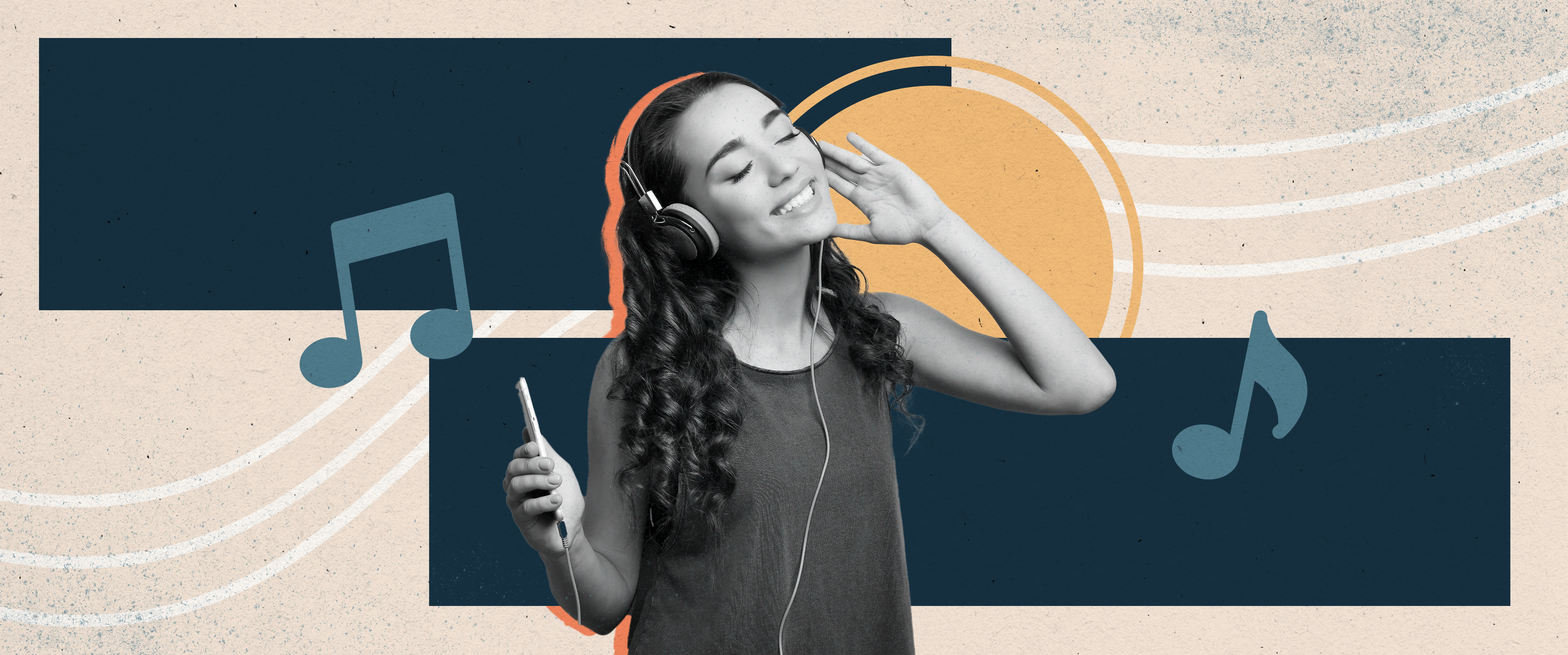We’re constantly surrounded by advertisements, whether someone wants to sell us something via television commercials, Instagram ads, or the unskippable videos before your YouTube binge.
My experience as a musician and working alongside music supervisors led me to look closer into the advertising world with fresh eyes and a perspective that I related to. Music in advertising is about how we work as humans — what triggers us, how we behave given the circumstances, and how we can use this information to manipulate the mind for the sale. Let’s dive in, shall we?
How It Started
Back in the day, it wasn’t as simple for businesses to creatively tickle all the senses. If a business wanted a source of entertainment for their shoppers, they hired the likes of clowns and acrobats — purely visual. It wasn’t until 1891 that the first jingle was created for De Long Hook and Eye Co. Jingles then began to pick up speed because they… worked.
The first radio jingle was broadcast in 1926, saving General Mills from going bankrupt. Target audience localization and genre ensued, and the rest is history. Take a listen today and you’ll find jingles are still impressively prevalent.
Why You Should Care
Music can evoke emotion of your advertisement’s viewers. An upbeat, fuzzy guitar may enhance the viewer’s lust for beer while a melancholic, arpeggiated piano guilts you into donating only 10 cents a month. We all know about the Y2K resurgence over the course of the pandemic, showing that nostalgia plays a factor.
Music in advertising can create a story. According to Shalyn Dever of Chatter Buzz, “Gatorade released a commercial at the same time baseball player Derek Jeter announced his retirement. The soundtrack that was used was Frank Sinatra’s ‘My Way’ and fits the storyline perfectly. [T]he music exudes the classic spirit of New York and even follows the commercial’s energy, ending it with Frank Sinatra’s grand finale on ‘My Way.’”
People love to be inspired, so cultivating an anthem they cannot ignore is worthwhile. “From motivating you to do better, or taking a stand against something, music is a catalyst for change and action,” Dever continues. “That’s why commercials that want to promote, advocate, or take a stand on a subject use music to help propel their message.” Always’ #LikeAGirl campaign is a prime example of inspiration in action.
Because brands align themselves with their audience, the music should reflect that too. “That’s why you hear gritty, electronic music in commercials geared towards a younger audience and more traditional, pleasant music for a more mature audience,” Dever adds.
The Science Behind It All
Studies that monitor participant’s brain waves while listening to music show how strong of a role music plays in advertising. According to a study from Texas A&M University, “The evidence is in consumers’ brain waves: Study participants who were shown the version of a commercial that included music in the background had higher emotional arousal and attention level.” Likewise, other studies conducted show how music can affect other parts of the body, like skin response and heart rate.
Find What Works Best For You
With a better understanding of the role music plays in advertising, brands can find what’s best for their marketing strategies. In an article, Polly Wyn Jones of consulting agency Kantar notes, “The growing popularity of podcasts, social audio, voice messaging and new technology means that ‘sound off’ is being replaced by sound very much ‘on’. 84% of the ads [Kantar] tests globally have music. The most important reason to do so is that the lack of it makes it much harder to connect with your audience on an emotional level.”
The next step is to make sure you’re using music on the right platforms. Jones continues, “50% of Facebook ads contain music, but we know from our behavioral metrics that around 85% of viewing on Facebook is done with the sound off, making the expense of music rights unjustified.”
When you’re ready to use music in your advertisements, don’t forget to consider the legalities of music licensing.
Ads in Action
Here are some of the best uses of music in advertising:
This iconic Sarah McLachlan song plays into emotion in this equally iconic ASPCA commercial. It’s recognizable, still talked about, and a great example of music used in advertising.
Volkswagen started a new trend with this one. Instead of using the traditional “punch buggy” tune, they opted for “The Clapping Song,” incorporating choreography that no one can resist.
And on the flip side, here are some of the worst:
This Geico commercial, featuring a motorcycle, uses an Allman Brothers song, coming off as insensitive due to the fact that one of the brothers died in a motorcycle accident. Make sure you do your research.
It’s pretty obvious why a Jane’s Addiction song doesn’t belong in a Jack Daniels commercial. Why mention addiction when you’re selling alcohol?
Looking Ahead
Music in advertising has proven to be one of the most important aspects and clearly should not be an afterthought. Because music is a universal language and something we’re constantly surrounded by, why not use it to your advantage? Speak to your audience, immerse them in your ideas, and heighten their senses. At the end of the day, music can make or break your brand, so start singing!



